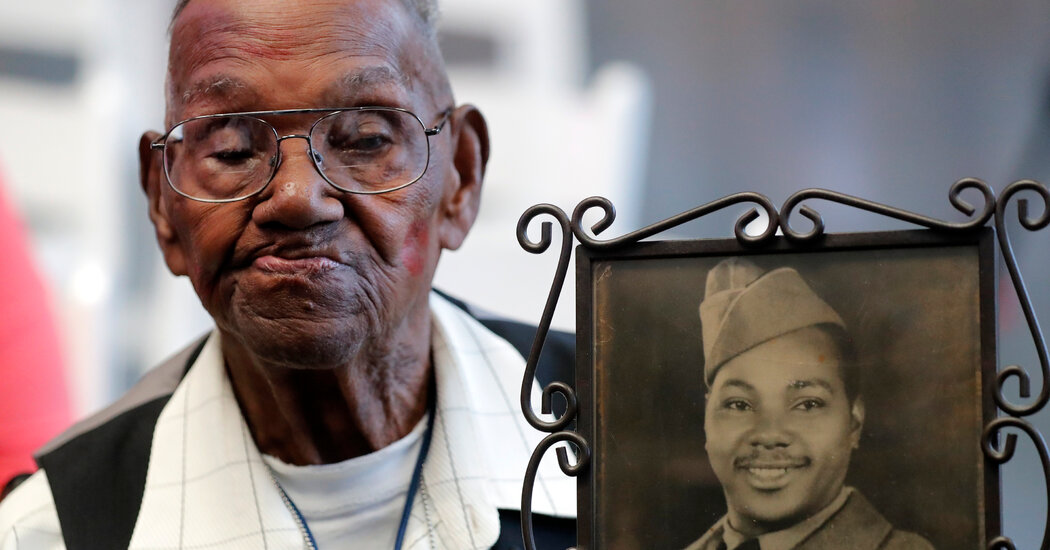He served in the largely African American 91st engineering unit at a time of segregation in the Army.
Lawrence N. Brooks, the oldest World War II veteran in the United States, who served his country in a segregated unit, died on Wednesday. He was 112.
His death was announced by the National World War II Museum in New Orleans. It did not say where he died. He had lived in the New Orleans area.
Assigned to the mostly Black 91st Engineer General Service Regiment — an Army unit, stationed in Australia, that built bridges, roads and airstrips — Private Brooks served as a caretaker to three white officers, cooking, driving and doing other chores for them.
Most African Americans in the segregated U.S. armed forces at the beginning of the war were assigned to noncombat service units that handled supplies, maintenance and transportation, said Col. Peter Crean, vice president for education and access at the war museum.
“The reason for that was outright racism — there’s no other way to characterize it,” Colonel Crean said.
Mr. Brooks was born on Sept. 12, 1909, one of 15 children. Originally from Norwood, La., near Baton Rouge, he moved with his family to the Mississippi Delta as an infant. He lived too far from the nearest school for him to attend, so his parents taught him what they could at home.
Mr. Brooks was working at a sawmill when he was drafted into the Army in 1940 and assigned to the 91st engineering unit.
Colonel Crean, who got to know him through a 2014 oral history interview with the museum, said that Mr. Brooks had talked about how much better he had been treated in Australia than in the Jim Crow Deep South. But he said Mr. Brooks had also told him that thinking about it would make him angry, so he tried not to.
Mr. Brooks said he considered himself fortunate to have been spared combat duty later in the war, when troop losses forced the military to send more African American troops to the front lines. In 1941, fewer than 4,000 African Americans were serving in the military; by 1945, that number had increased to more than 1.2 million.
“I got lucky,” he said. “I was saying to myself, ‘If I’m going to be shooting at somebody, somebody’s going to be shooting at me, and he might get lucky and hit.’”
He did experience enemy fire, though, when the Japanese bombed Owen Island in South Australia, where he worked. “We’d be running like crazy, trying to hide,” he said. He and his comrades had to dig foxholes to protect themselves.
He was discharged in August 1945 as a private first class, then worked as a forklift driver.
He is survived by five children, five stepchildren and dozens of grandchildren and great-grandchildren. His wife, Leona, died shortly after Hurricane Katrina, which destroyed their home in 2005. He was in his late 90s at the time, and had to be rescued from his roof by helicopter. His daughter Vanessa described him as “resilient.”
“He’s real tough, and that’s one thing I learned from him,” she told The Associated Press. “If nothing else, he instilled in me, ‘Do your best, and whatever you can’t do, it don’t make no sense to worry about it.’ I think that’s why he has lived as long as he has.”


























